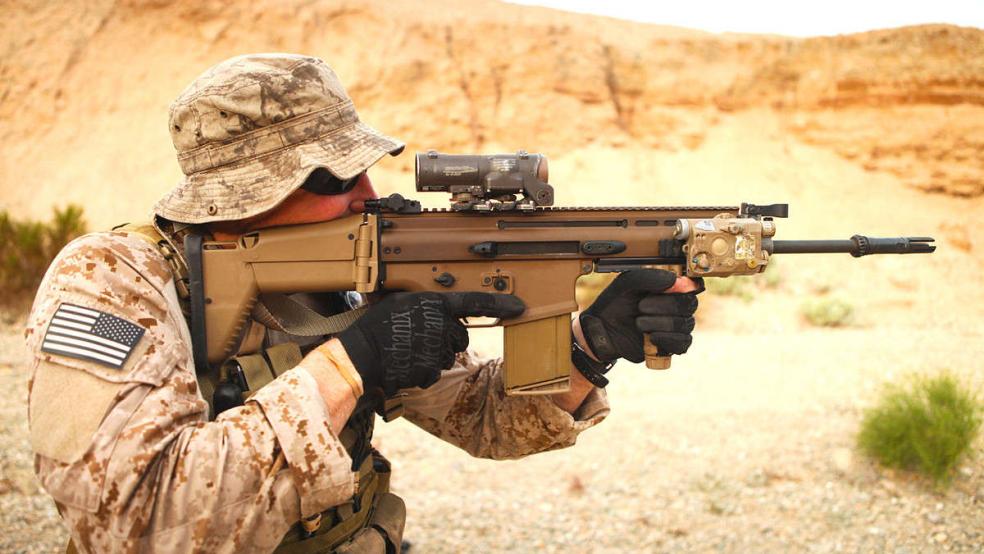An arms race of sorts has finally caught up with the United States Army, and the Pentagon is turning to the private sector for help, looking for a weapons manufacturer to provide as many as 50,000 new combat rifles that can fire a heavier, more lethal bullet than the one most the military’s standard-issue firearms use.
In a request for bids released Friday, the Army asked interested vendors to forward sample weapons for testing, specifying that they need to be able to fire the M80A1 Enhanced Performance Round, a 7.62 x 51 mm projectile that is designed to penetrate advanced body armor -- something that the Pentagon has determined that designs currently carried by U.S. troops cannot do.
Related: 3 Attack Planes the Air Force Will Test to Replace the A-10 Warthog
“The Army has identified a potential gap in the capability of ground forces and infantry to penetrate body armor using existing ammunition,” it reads. “To address this operational need, the Army is looking for an Interim Combat Service Rifle (ICSR) that is capable of defeating emerging threats.”
The problem the Army is trying to address is one that has been apparent for some time: High-quality ceramic body armor has become increasingly available globally, and the standard ammunition issued to U.S. service members cannot penetrate it effectively, if at all.
Since the 1960s, standard U.S. infantry rifles such as the M-16 have been chambered for a 5.56 x 45 mm round. In a sense, the Army will be returning to its past if it winds up adopting a 7.62 x 51 mm rifle for the future, because until the mid-1960s, that kind of weapon was standard issue.
The older M-14 rifle, for example, which was replaced by the M-16, was chambered for the larger round. The switch in the 60’s was driven by a cost benefit analysis that determined that the lighter weight of the M-16’s projectile made up for the smaller size of the individual projectile by allowing soldiers to carry more than twice as many rounds at the same weight. At the time of the switch, U.S. soldiers in Vietnam were facing North Vietnamese and Viet Cong soldiers armed with lighter-weight weapons – most notably the AK-47 -- in conditions where the increased power and range of the M-14 counted for less.
Related: 21 US Weapons That Could Stop North Korea
However, the rise of effective and available body armor has apparently caused a reassessment of what it means for a combat rifle to be “effective.” A report commissioned by the Army and released earlier this year also found that U.S. troops were in many cases “outgunned” by enemy fighters in the field, in the sense that the smaller, lighter 5.56 x 45 round is not as effective as larger, heavier bullets at longer distances.
As military contracting goes, the dollar figure attached to this particular deal is unlikely to be eye-popping. The rifles in question will likely be modified versions of weapons that are already in production, meaning that they will not have to carry large amounts of R&D cost in the purchase price.
Because fully-automatic-capable rifles are not available on the civilian market, it’s difficult to find a very precise price point for the kind of weapon the Army is soliciting, but even at several thousand dollars each, the total for 50,000 of them would still be less than the price of a single F-35C fighter plane.
Of course, if the Pentagon eventually decides that the standard issue weapon for most U.S. soldiers needs to transition to one chambered for a 7.62 x 51 mm round, the dollar figure would increase by orders of magnitude.





